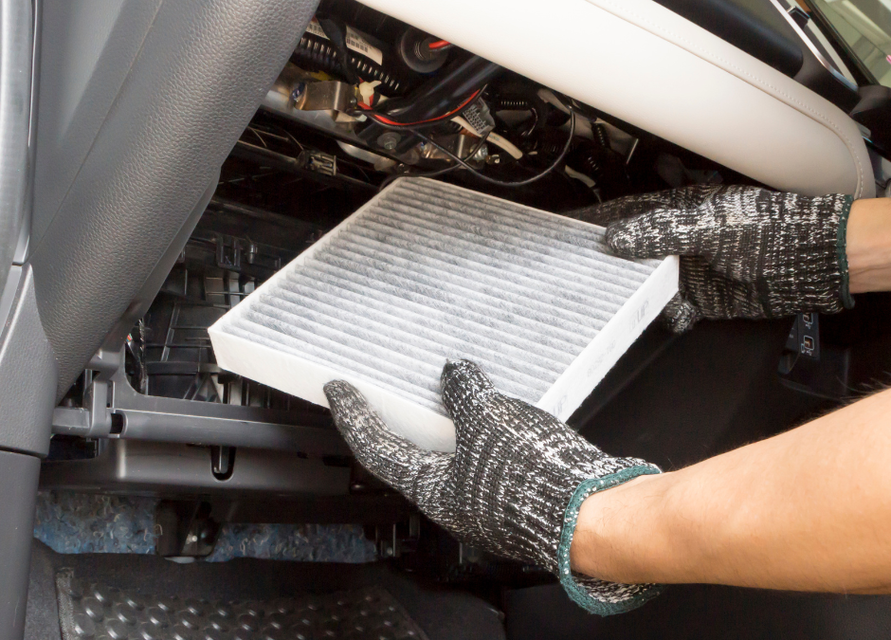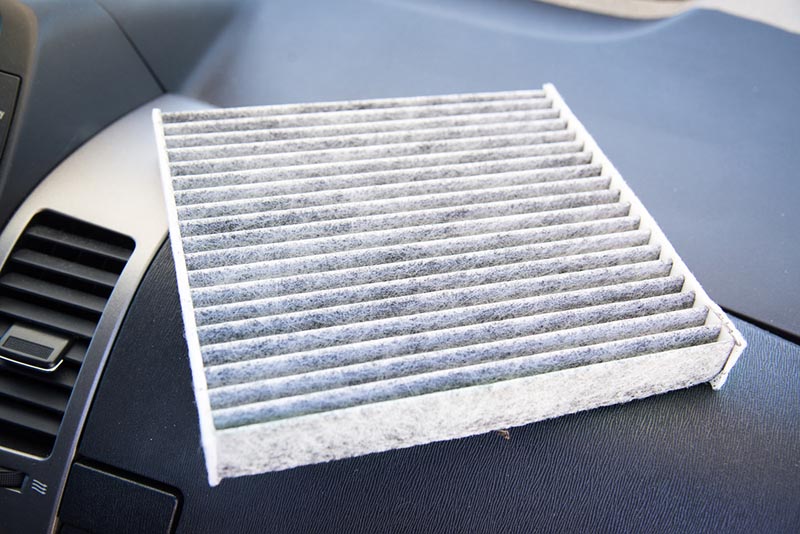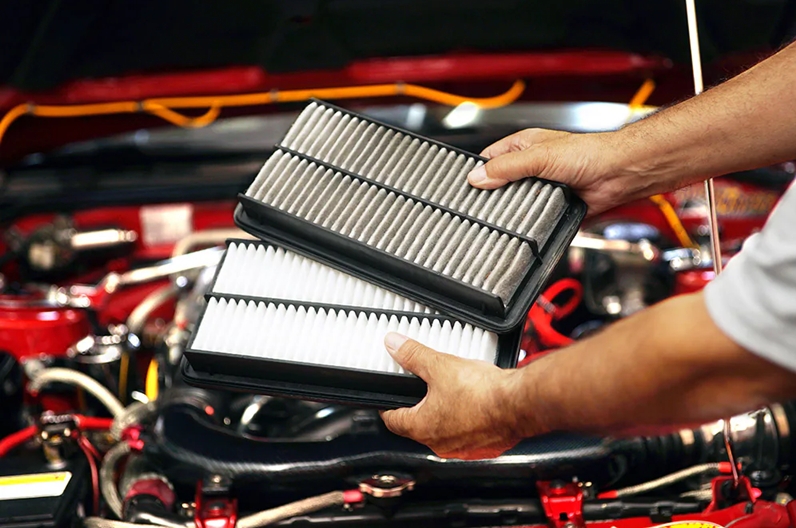Driving with clean, fresh air shouldn’t be a luxury—it should be standard. Yet millions of drivers unknowingly breathe contaminated air every day simply because they’ve never replaced their cabin air filter. Whether you’re dealing with musty odors, poor HVAC performance, or allergy symptoms while driving, choosing the best cabin air filter can transform your daily commute into a breath of fresh air.
Your vehicle’s cabin air filtration system works tirelessly behind the scenes, trapping everything from dust particles and pollen to exhaust fumes and harmful chemicals before they enter your breathing space. But with so many filter types and brands available, how do you determine which option is truly the best cabin air filter for your needs—one that provides the optimal balance of air purification, durability, and value?
The truth is, not all automotive air filters are created equal. Some excel at capturing microscopic allergens, while others specialize in eliminating unpleasant odors and toxic gases. Understanding these differences is crucial for making an informed decision and selecting the best cabin air filter that matches your specific needs, driving environment, and health considerations.
Also read: 5 Common Cabin Air Filter Installation Issues and Quick Fixes
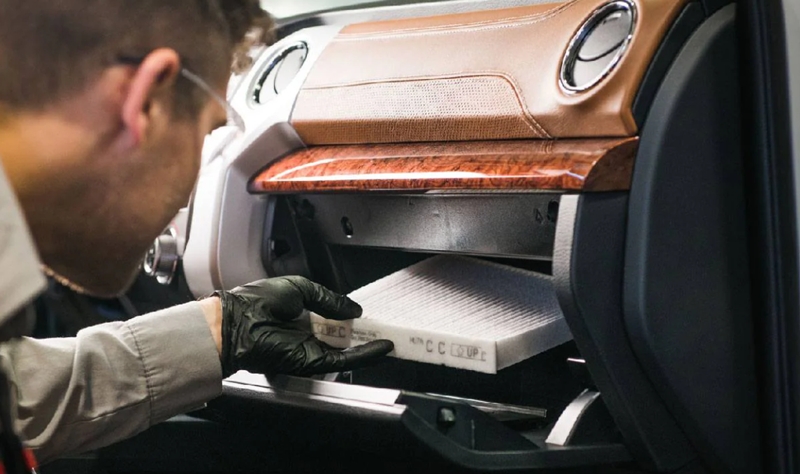
Signs You Need to Replace Your Cabin Air Filter
Even the best cabin air filter can’t perform forever. Over time, dust, pollen, debris, and even mold can build up, clogging your filter and reducing your vehicle’s air quality. Here are some common signs it’s time for a replacement:
- Musty or unpleasant odors when the A/C or heater is running
- Reduced airflow through your vents—even at full blast
- Foggy windows that take longer to clear
- Strange noises coming from the HVAC system
- Increased allergy symptoms or respiratory irritation while driving
- Visible dirt or discoloration on the filter during inspection
If you experience any of these issues, check your filter—even more often than the recommended 12-month cabin filter lifespan, especially if you live in a dusty or urban environment.
Also read: How to Replace Your Cabin Air Filter in 7 Simple Steps for a Fresher Ride
How to Compare Cabin Air Filter Specs
Choosing the best cabin air filter isn’t just about brand—it’s about understanding the specs. Here’s a breakdown of what to look for:
1. Micron Rating
This tells you the size of particles the filter can trap. A lower micron rating (like 0.3 microns) means the filter captures finer particles like smoke and allergens.
Pro tip: HEPA filters capture 99.97% of particles as small as 0.3 microns.
2. Electrostatic Charge
Some filters use electrostatically charged fibers to attract particles, which enhances performance without increasing resistance to airflow.
3. Activated Carbon
Filters with activated carbon can absorb odors, gases, and volatile organic compounds (VOCs). Ideal if you drive in high-traffic or industrial areas.
4. Multi-Layer Design
High-end filters may combine particulate, carbon, and antimicrobial layers to provide a well-rounded defense against contaminants.
Quick tip: Always check your owner’s manual or a trusted parts lookup tool to ensure the filter you choose matches your vehicle.
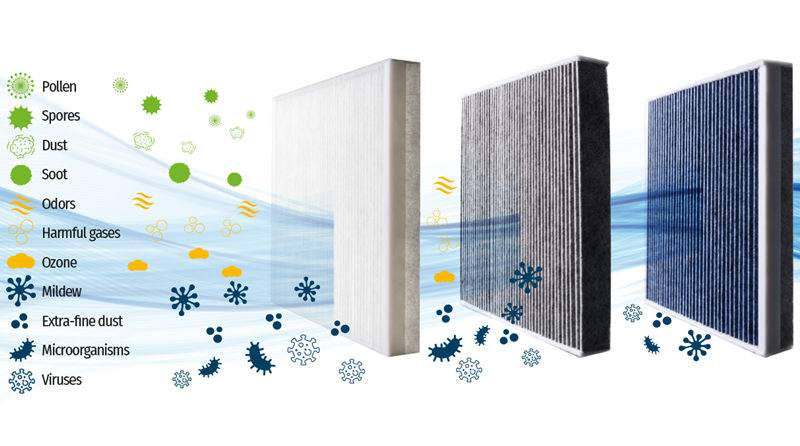
Understanding Cabin Air Filter Types and Technologies
The world of cabin air filtration has evolved dramatically over the past decade. Particulate filters typically remove between 90% and 99% of airborne particles ranging in size from 5–100 microns, making them effective against common contaminants like dust, dirt, and pollen. These basic filters represent the entry-level option for most vehicles and provide adequate protection for drivers without specific respiratory sensitivities. However, they are rarely the best cabin air filter for people dealing with allergies or urban smog.
Modern air quality challenges demand more sophisticated filtration solutions. Urban environments expose drivers to higher concentrations of vehicle emissions, industrial pollutants, and volatile organic compounds (VOCs) that basic particulate filters simply cannot address effectively.
Carbon-activated filters represent a significant upgrade in filtration technology. These filters offer several advantages:
- Odor elimination: Highly effective at removing unpleasant smells from exhaust fumes, cooking odors, and chemical vapors
- Gas filtration: Captures harmful gases and volatile organic compounds that pass through basic filters
- Dual protection: Combines particulate filtration with chemical adsorption for comprehensive air cleaning
- Urban driving benefits: Particularly valuable in high-traffic areas with heavy pollution
If you drive in congested city areas or regularly encounter strong odors, a carbon-activated filter might be the best cabin air filter for your lifestyle.
HEPA filters provide the highest level of filtration available for automotive applications:
- Maximum particle capture: Remove 99.97% of airborne particles as small as 0.3 microns
- Allergen protection: Highly effective against pollen, dust mites, pet dander, and mold spores
- Health benefits: Essential for drivers with allergies, asthma, or respiratory sensitivities
- Microscopic filtration: Capture bacteria, some viruses, and ultra-fine pollution particles
For drivers with serious health concerns, the best cabin air filter is almost always a HEPA model due to its exceptional filtering power.
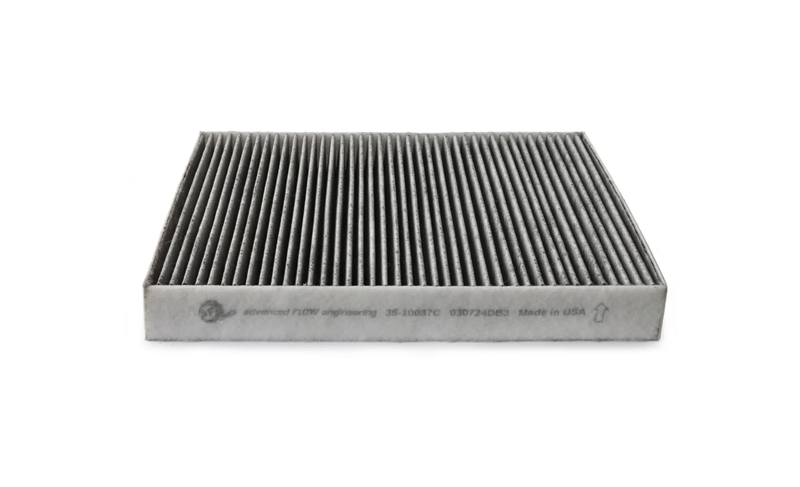
Comparing Performance: Particulate vs. Carbon vs. HEPA Filters
Each filter type excels in different areas, and understanding these strengths helps you select the best cabin air filter for your specific situation. Here’s how they compare:
Particulate Filters
- Cost-effective: Most affordable option for basic air filtration needs
- Reliable protection: Effective against larger contaminants like dust, dirt, and pollen
- Low maintenance: Simple replacement process with minimal HVAC impact
- Best for: Budget-conscious drivers in relatively clean environments
For drivers looking for the best cabin air filter at a low cost, particulate filters are a solid starting point—especially in rural or low-pollution areas.
Carbon Filters
- Odor control: Superior at neutralizing smells from external sources
- Chemical protection: Removes gases and VOCs that other filters miss
- Urban advantage: Ideal for city driving with heavy traffic and pollution
- Moderate cost: Higher price than basic filters but reasonable for enhanced protection
Carbon filters are often considered the best cabin air filter for drivers who frequently encounter smog, exhaust fumes, or strong odors. Their ability to tackle chemical vapors makes them indispensable in urban environments.
HEPA Filters
- Maximum filtration: Highest particle removal efficiency available
- Health focus: Essential for allergy sufferers and respiratory conditions
- Premium protection: Captures microscopic threats other filters cannot
- Investment grade: Higher cost but superior long-term health benefits
HEPA filters remove large and even nanosized particles, while activated carbon filters rid your indoor space of gaseous pollutants that pass right through HEPA filters. This fundamental difference highlights why selecting the best cabin air filter depends on your most pressing air quality concerns.
Carbon filters shine in urban environments where exhaust fumes, industrial emissions, and chemical odors are prevalent. They effectively neutralize smells from external sources like nearby restaurants, construction sites, or agricultural areas. However, carbon filters require more frequent replacement as the activated carbon becomes saturated with absorbed contaminants, which is something to consider when choosing the best cabin air filter for city driving.
HEPA filters excel at protecting occupants from allergens and microscopic particles. They’re particularly valuable during high pollen seasons, in dusty environments, or for drivers with compromised immune systems. While they offer excellent protection, the higher cost and slight reduction in airflow should be weighed when choosing the best cabin air filter for your health and comfort—especially if you drive in areas with fluctuating air quality.

Top Cabin Air Filter Brands and Models
The automotive filtration market features several standout manufacturers, each bringing unique strengths to their product lines. Whether you prioritize performance, value, or long-term durability, understanding the leading options helps you find the best cabin air filter for your vehicle.
Premium Brands
- Bosch: Innovative multi-layer designs combining particulate and carbon filtration
- K&N: Performance-focused filters with washable, reusable options
- Mahle: OEM-quality construction with advanced filtration media
- Purolator: Exceeds factory specifications while maintaining optimal airflow
Bosch leads the market with innovative designs that balance filtration efficiency with airflow optimization. Their filters often feature multi-layer construction, combining particulate and carbon filtration for comprehensive protection. For many drivers, Bosch products represent the best cabin air filter for both urban and suburban environments.
K&N brings their performance heritage to cabin filtration, offering washable filters that appeal to environmentally conscious consumers and those seeking long-term value. These reusable models are ideal for drivers looking to invest in the best cabin air filter with sustainable features and high airflow capacity.
Value Options
- Fram: Excellent price-to-quality ratio with extensive vehicle compatibility
- EPAuto: Budget-friendly carbon filters that improve HVAC performance
- AC Delco: GM’s trusted brand offering reliable OEM replacement quality
- Beck/Arnley: Professional-grade filters for import vehicles
Fram air filters are great at combining price and quality, with Fram being one of the largest air filter companies in the world. Their extensive product range ensures compatibility with virtually any vehicle make and model, making them a reliable choice for mainstream applications.
Premium brands like Mahle and Purolator focus on OEM-quality construction and advanced filtration media. These filters often exceed factory specifications while maintaining optimal HVAC system performance. For budget-conscious consumers, the EPAuto CP285 is a reasonably priced carbon filter that improves HVAC performance—proving that even affordable options can deliver the best cabin air filter experience for everyday drivers.
Installation and Maintenance Considerations
Why Proper Installation Matters
Proper installation and timely replacement are essential for maintaining optimal cabin air quality. Most cabin air filters last about a year, though you may notice symptoms like stale odors or reduced airflow when it’s time for a change—common signs of a bad filter. Choosing the best cabin air filter is only half the equation; correct installation ensures you actually benefit from its features.
Where to Find Your Cabin Air Filter
The replacement process differs slightly by vehicle make and model. Most cabin air filters are located behind the glove box or under the dashboard. Some vehicles require basic tools for access, while others use tool-free clips or latches, making DIY maintenance simple. Always consult your owner’s manual to avoid damaging the filter housing or HVAC system.
How Environment Affects Filter Life
Your driving environment plays a big role in how often the filter needs replacing. If you regularly drive through dusty backroads, high-traffic urban areas, or regions with high pollen counts, your filter will clog more quickly. Conversely, in cleaner or less populated areas, you might be able to extend the life of your filter beyond the standard one-year mark.
A quick visual check can help: a clean filter appears white or lightly tinted, while a dirty one shows visible debris, grayness, or dark stains. To get the most out of even the best cabin air filter, keep an eye on its condition throughout the year.
Environmental Impact: Are Reusable Filters Worth It?
If you’re environmentally conscious or want long-term savings, reusable cabin air filters might be the way to go.
Washable Filters
Brands like K&N offer washable, reusable cabin air filters made with durable materials. These can be cleaned and reused for several years, reducing landfill waste and saving money over time.
Sustainability Pros
- Less plastic waste over time
- Fewer resources used in manufacturing
- Ideal for high-mileage drivers who replace filters more often
Just remember: reusable filters require regular cleaning (often every 12,000 to 15,000 miles), so be ready to maintain them properly.
Going Beyond Basic Replacement
Filter maintenance doesn’t stop at swapping in a new one. For optimal performance:
- Clean the filter housing and surrounding area
- Ensure the filter seals properly to prevent air bypass
- Keep interior surfaces free of dust and dander
- Use filters with smart indicators (available in some premium models) to track air quality and notify you when it’s time for a change
These small habits extend the life and effectiveness of even the most basic filter.
Comparison Table: Particulate vs. Carbon vs. HEPA Cabin Air Filters
| Feature | Particulate | Carbon-Activated | HEPA |
|---|---|---|---|
| Price Range | $ | $$ | $$$ |
| Odor Removal | ❌ | ✅ | ✅ |
| Chemical/VOC Filtration | ❌ | ✅ | ✅ |
| Allergen Protection | ✅ (basic level) | ✅ | ✅✅✅ (best) |
| Particle Size Captured | 5–100 microns | 0.5–50 microns | Down to 0.3 microns |
| Reusable Options | ❌ | ❌ | ✅ (some models like K&N) |
| Best For | Clean environments | Urban/Smoggy areas | Allergy sufferers/clean air enthusiasts |
Making the Best Choice for Your Needs
Consider Health and Air Quality
Selecting the best cabin air filter means weighing your personal needs against what’s available. If you suffer from allergies, asthma, or other respiratory issues, HEPA filters—though pricier—are often worth the investment for their superior particle capture. Meanwhile, drivers in smog-heavy cities or near construction zones might get more benefit from carbon-activated filters that neutralize odors and harmful gases.
Adapt to Your Climate
Climate also plays a role. Hot and humid areas can breed mold and bacteria in your HVAC system. In these cases, filters with antimicrobial treatments are ideal. On the flip side, cold climates require filters that maintain good airflow even when heating systems are in frequent use. Knowing your region’s conditions helps you find the best cabin air filter for year-round comfort.
Match Your Driving Habits
People who spend a lot of time in their vehicle—delivery drivers, rideshare operators, commuters, or parents driving kids—should lean toward high-performance filters for better long-term health protection. If you only drive occasionally or live in a clean environment, a basic particulate filter may be sufficient.
In either case, the best cabin air filter is the one that fits your routine and protects your breathing space without straining your budget.
Think Long-Term Value
Budgeting goes beyond just the purchase price. While premium filters cost more upfront, they tend to last longer and perform better, making them more cost-effective over time. On the other hand, affordable filters can still do the job well if replaced regularly and used in mild conditions.
Need a mechanic? Find one on the Mobile Mechanic Directory
Final Thoughts
Ultimately, the best cabin air filter is the one that aligns with your driving conditions, health priorities, and maintenance habits. Whether you go with a simple particulate filter for light-duty use or invest in high-performance HEPA or carbon-activated options, your goal is the same: to breathe cleaner, healthier air every time you’re behind the wheel.
Drivers in cities or industrial areas often benefit most from carbon filters, which do an excellent job neutralizing traffic fumes and chemical odors. On the other hand, if you or your passengers suffer from allergies, asthma, or other respiratory sensitivities, a HEPA cabin air filter offers unmatched filtration performance. In both cases, consistent replacement and proper installation are key to ensuring maximum protection and HVAC efficiency.
When choosing the best cabin air filter, it’s also smart to consider your budget over time. Washable filters may cost more upfront but can save money in the long run. Conversely, inexpensive filters may require more frequent replacement.
Ultimately, investing in the best cabin air filter not only protects your health but also enhances driving comfort and air quality. A small decision like this can have a big impact on your daily commute and long-term wellness.


